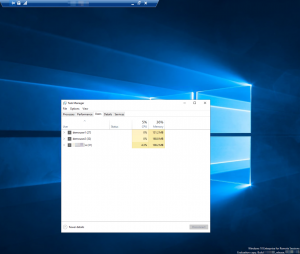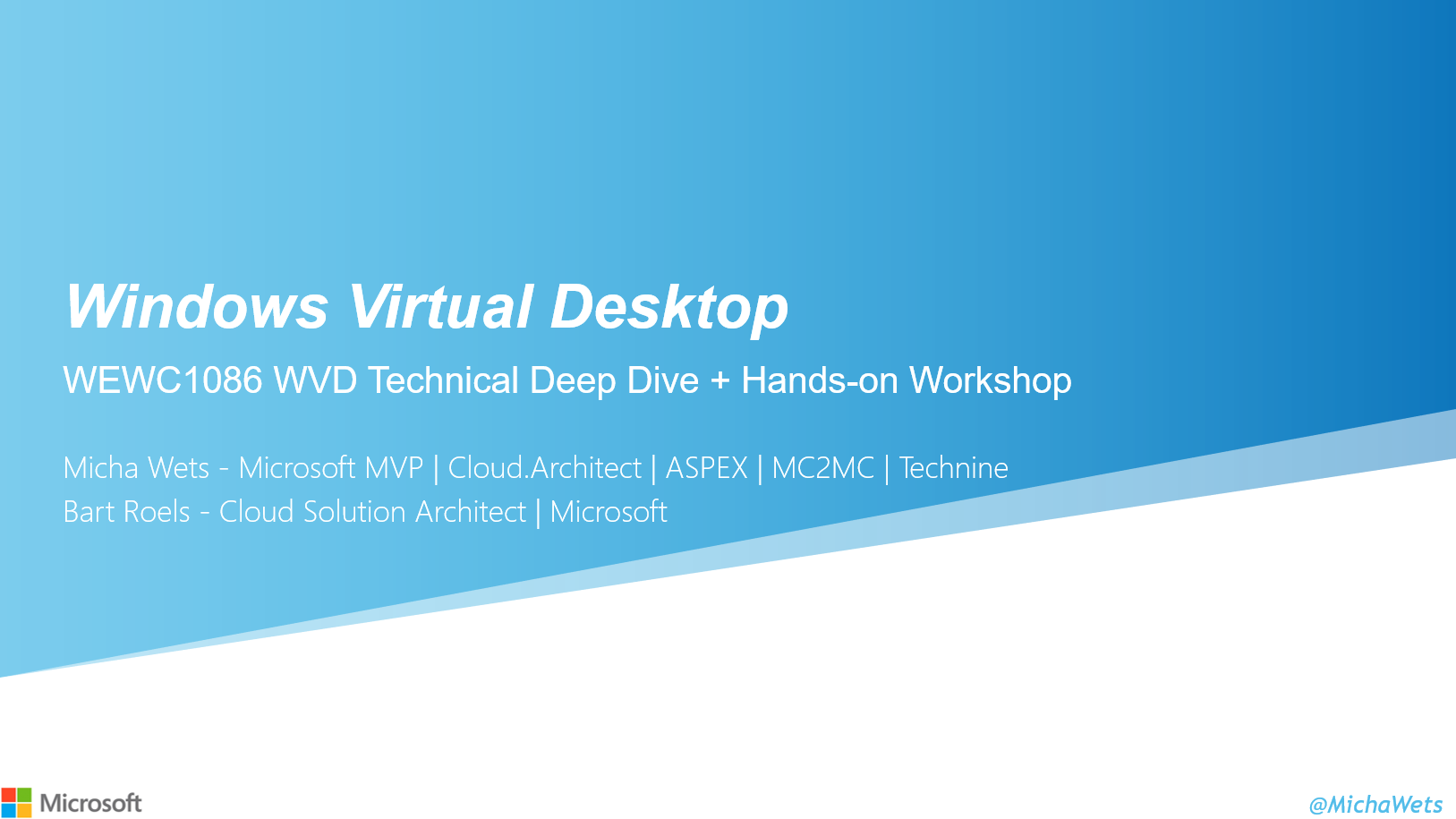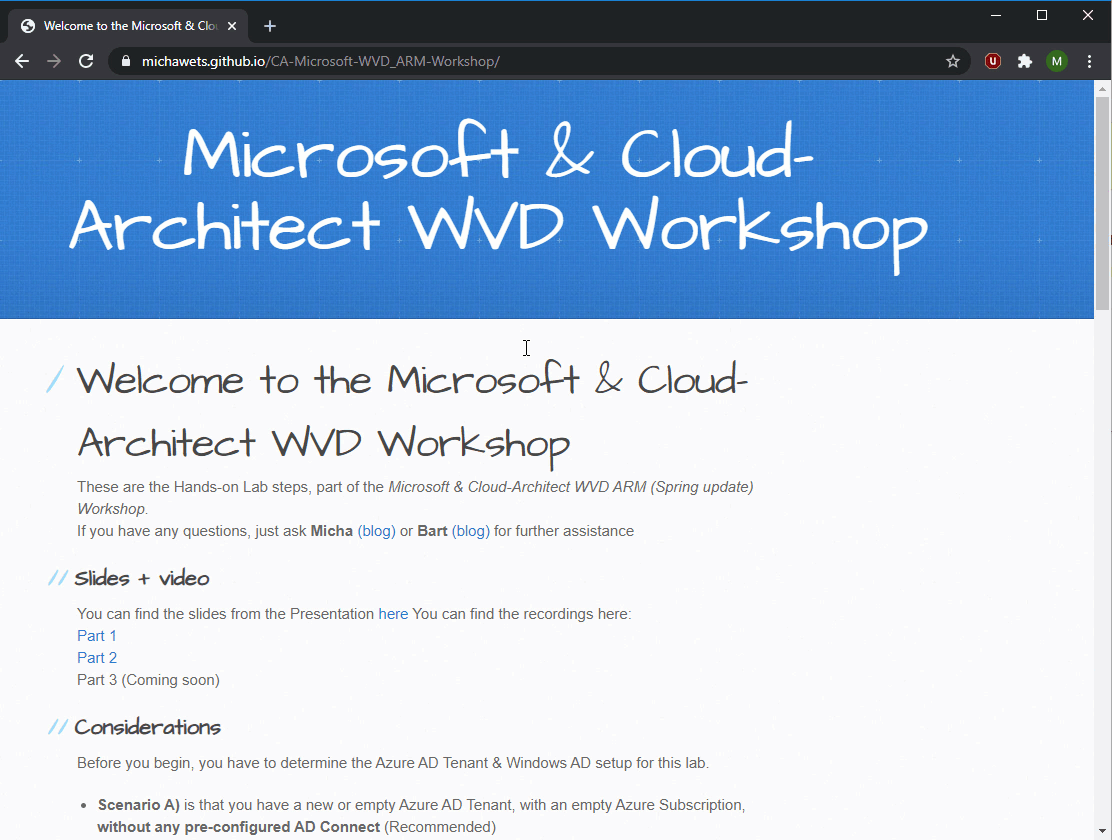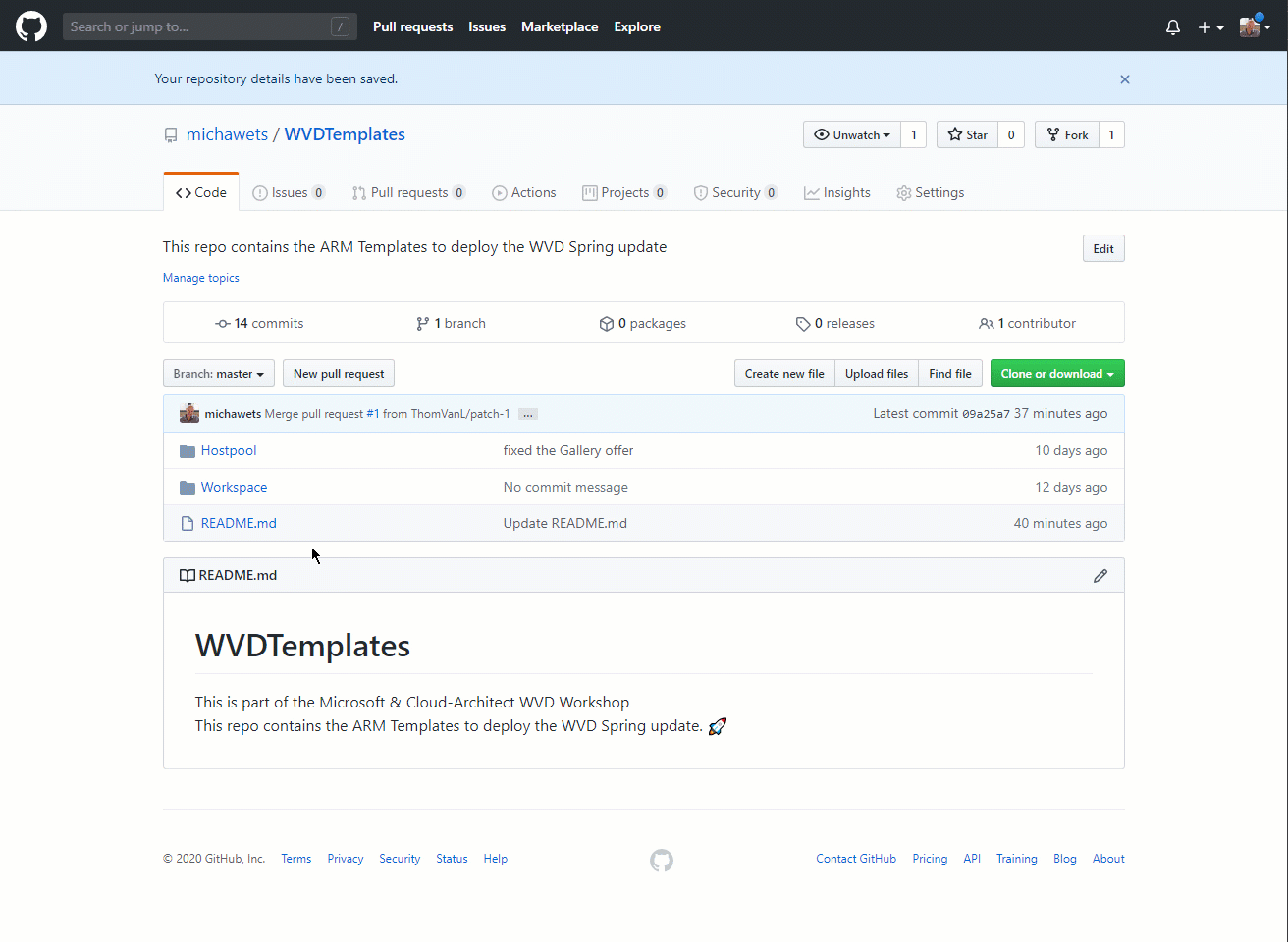
RDmi has evolved into Windows Virtual Desktop
Introduction
Last week at Ignite, Microsoft announced the new name and model for RDmi: Windows Virtual Desktop or shortened to WVD (follow me on Twitter or search for #RDmiEvolved and #MsWvd) A few things have changed since my latest blog about RDmi (https://www.cloud-architect.be/2018/03/27/rdmi-update-rdmi-compared-rds/) which I will describe below. We already knew a few things in advance, but we were not allowed to share them in public, until now!
From DIY to PAAS
The first change is the new delivery model for WVD. RDmi would have been a group of services that needed to be managed by yourself or your CSP/MSP like ASPEX, a Do-It-Yourself (DIY) model. Microsoft has changed this model from a DIY service to a PAAS service, fully managed by Microsoft. You can compare it to the Azure SQL Database, where Microsoft handles the SQL Deployment. This is the same for WVD: Microsoft handles the services, including HA, backup, etc. So the RDmi Infra Tenant services (Gateway, Web Access, Connection Broker & the new Diagnostics role) are all managed by Microsoft.
I will get into detail about the entire deployment in a future blogpost, coming soon. You can also attend CloudBrew on 12&13 October where I will give a session about RDmi/WVD and demo this deployment.
Licensing
There was no known licensing information for RDmi, except hosting the RDmi Infra Tenant services. With the shift from DIY to PAAS, Microsoft changed its licensing model for WVD. The WVD requires one of these licenses:
- Microsoft 365 E3/E5
- Microsoft 365 Business/F1
- Windows E3/E5
For all other users/customers is no licensing information available yet. I will keep you updated about this on Twitter & my blog.
Backend Support
The WVD will support multiple experiences: Virtual Desktops & Remote Apps, but also multiple backend system:
- Windows Server 2012 R2
- Windows Server 2016
- Windows Server 2019 (now in GA)
- Windows 10 Enterprise (more on this in next topic)
- Windows 7 Enterprise
Especially the last OS is an interesting one. If you host your Windows 7 Enterprise on Azure using WVD, you get free Extended Security Updates, to support your upgrade to Windows 10!
Windows 10 Enterprise Multi-Session
Another big announcement is the multi session Windows 10. Microsoft will soon release a Windows 10 version on Azure which will support multiple concurrent sessions. This is a great step forward for hosting Virtual Desktops on Azure. Because this brings along support for Modern Apps like Edge, Cortana, the Microsoft Store & Office 365 ProPlus (like Outlook, OneNote, OneDrive) support, all combined with semi-annual updates. 
I will write a blogpost in the next couple of weeks about my test results using this OS. This will also be in the demo’s on CloudBrew!
Conclusion
WVD will be a great solution to publish desktops and applications if you have the required licenses available. As soon as the other licensing possibilities are available, WVD will be a solution to deliver desktops and applications to your customers.
But this should not stop you from your migration to Azure now! You can already migrate to Azure, giving you a head start for WVD. Pavithra Thiruvengadam gave a great session at Ignite about Migrating virtualization environments to Azure, mentioning ASPEX as one of the Microsoft Azure Hosting Partners! Watch the video here: http://bit.ly/2NQGveZ
This is a short recap about WVD announced at Ignite. More detailed information and test results will be posted later on…
Blog announcement: https://azure.microsoft.com/en-us/blog/microsoft-365-adds-modern-desktop-on-azure/ WVD service page: https://azure.microsoft.com/en-us/services/virtual-desktop/





